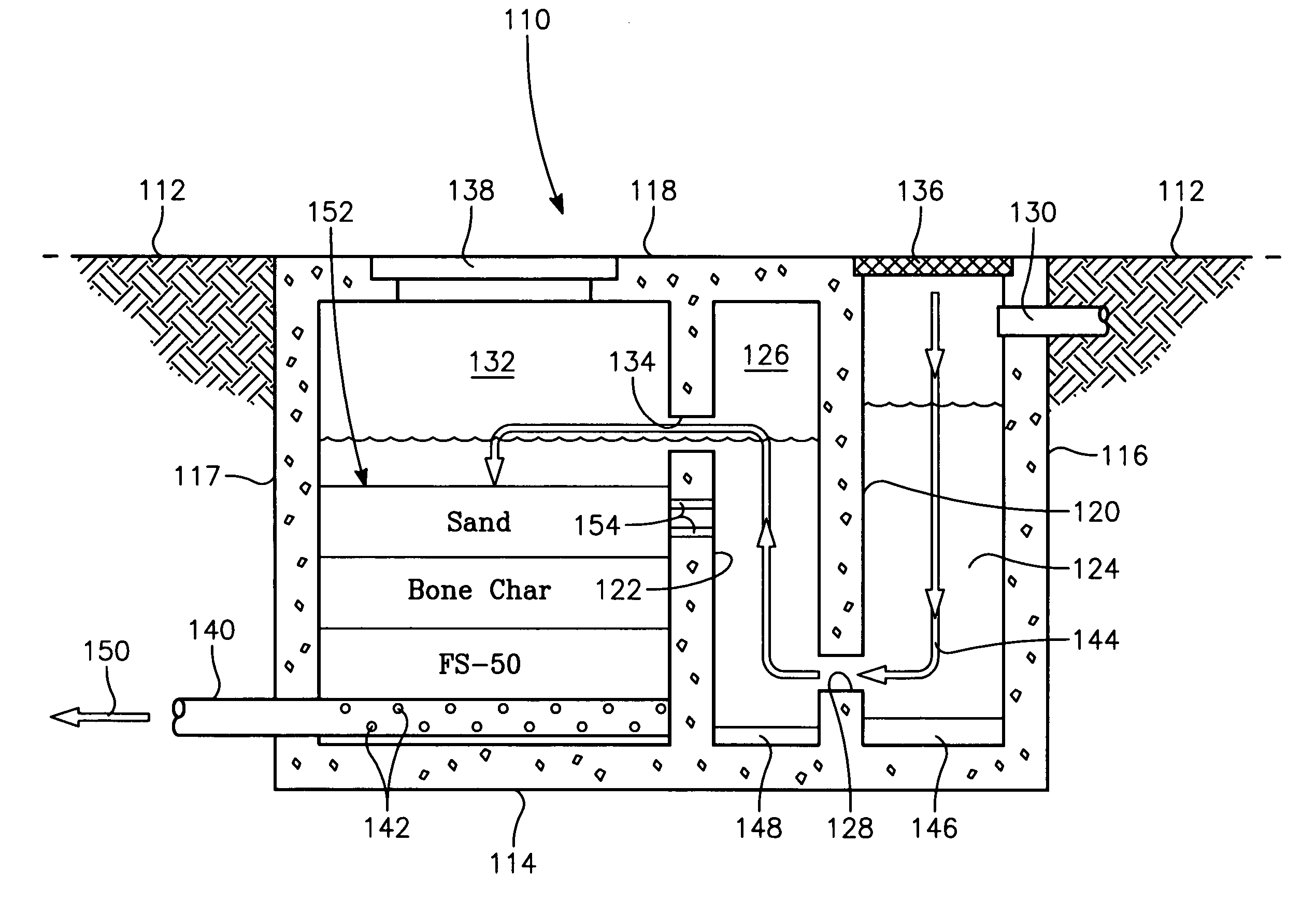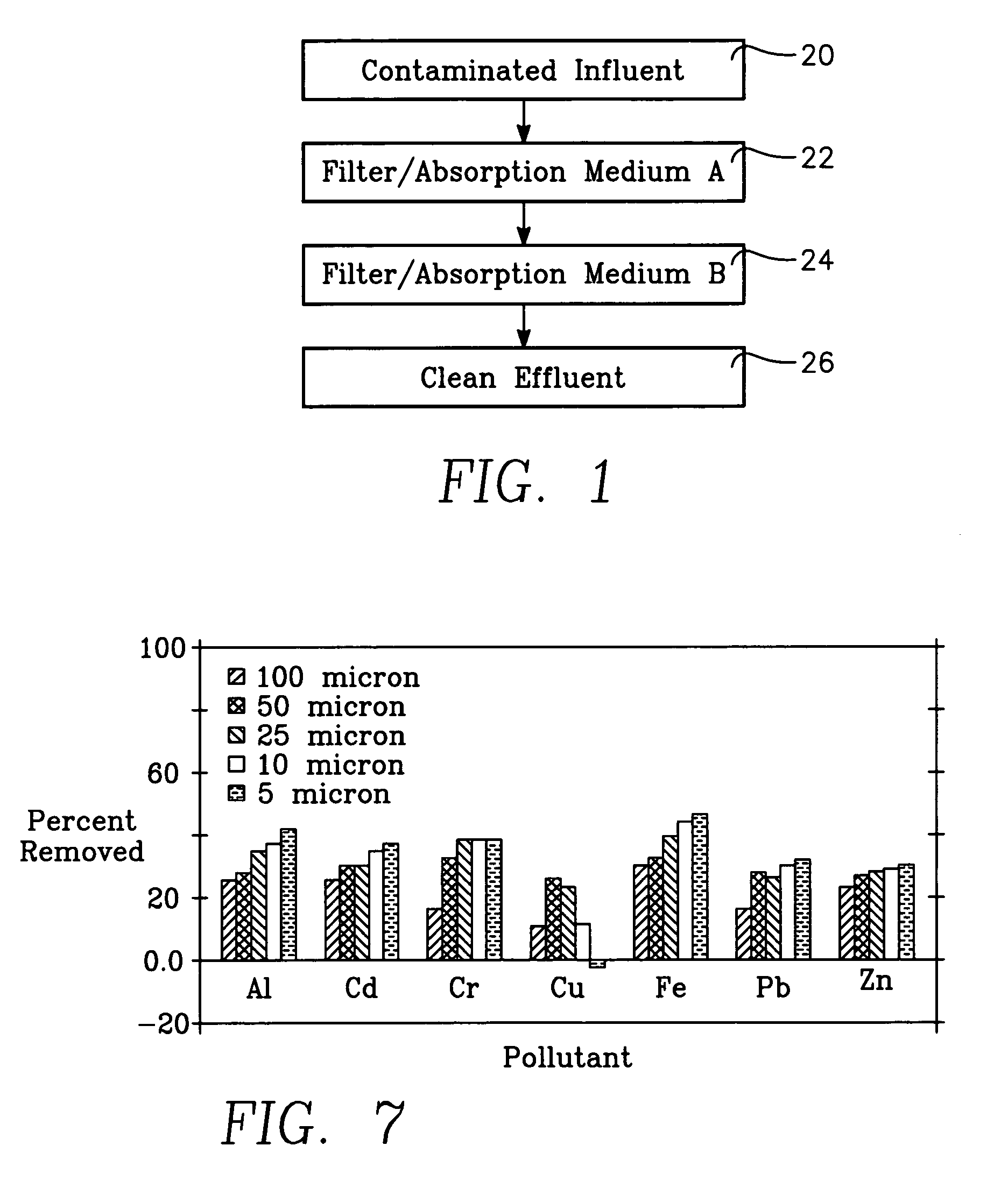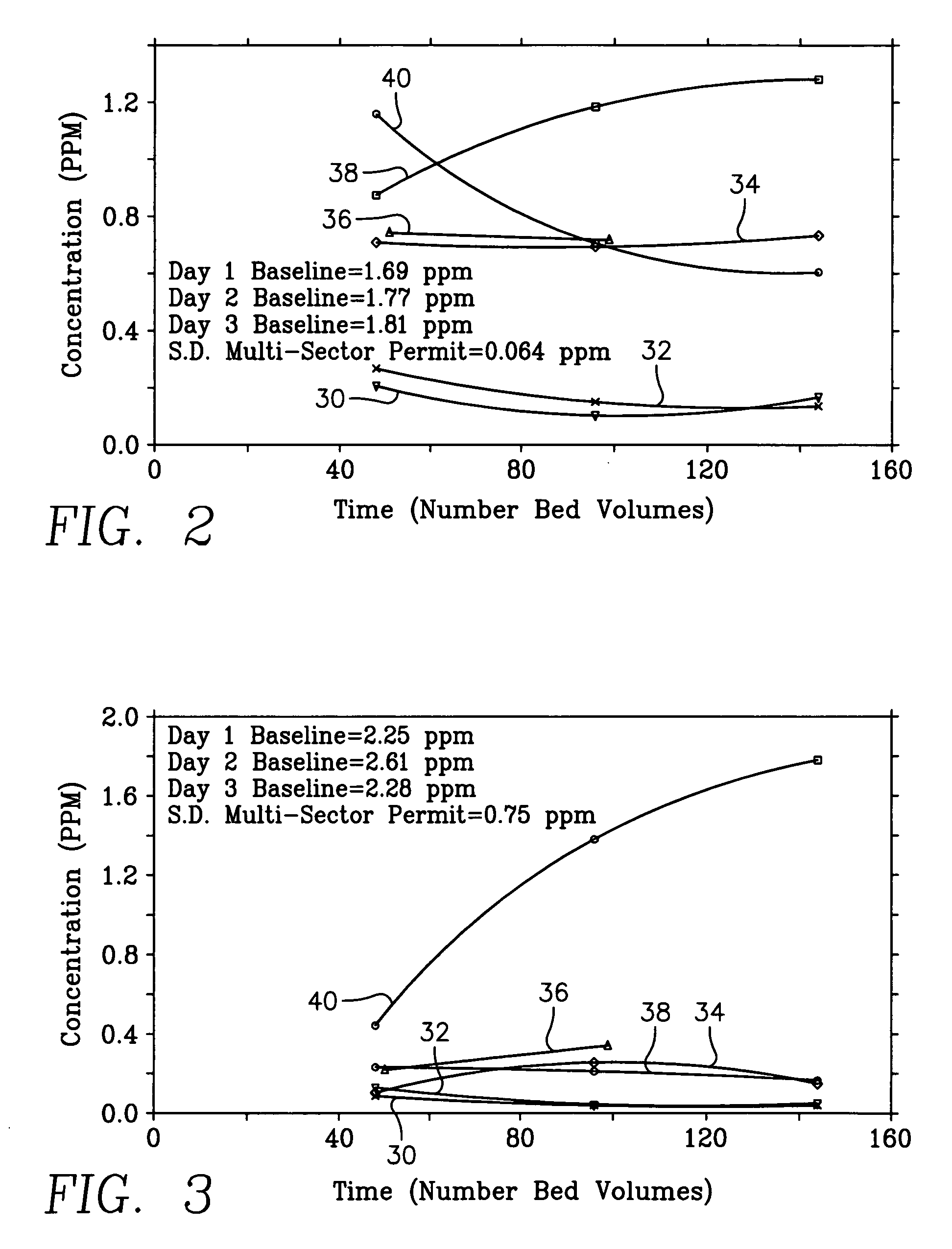Materials for removing toxic metals from wastewater
a technology for toxic metal removal and wastewater, applied in the field of materials for removing toxic metals from storm water runoff and wastewater, can solve the problems of contaminated sediments at harbor or port facilities that pose a substantial threat to aquatic life, wildlife, fisheries, and human health, and the implementation of best management practices alone may not be adequate to meet discharge regulations requirements. the effect of simple design
- Summary
- Abstract
- Description
- Claims
- Application Information
AI Technical Summary
Benefits of technology
Problems solved by technology
Method used
Image
Examples
Embodiment Construction
[0039]Referring to FIG. 1, the invention illustrated in FIG. 1 is designed to remove metals (in both solid and dissolved form) from storm water runoff. The invention of FIG. 1 may also be used to ship bilge and compensating ballast water, from plating shop wastewater, from pipe cleaning process wastewater, and from other wastewater streams containing solid and dissolved metals.
[0040]Wasterwater (block 20) contaminated with metals in solid and dissolved form enters media bed A (block 22). As the wastewater runs through the media bed A, particles of metal are filtered out of the wastewater and metal ions are absorbed on the media material in bed A. After exiting media bed A, the wastewater passes through media bed B (block 24). As the wastewater runs through media bed B, additional particles of metal are filtered out of the wastewater and metal ions are absorbed on the media material in bed B, resulting in a clean a effluent (block 26). In some applications the media material in beds ...
PUM
| Property | Measurement | Unit |
|---|---|---|
| length | aaaaa | aaaaa |
| height | aaaaa | aaaaa |
| height | aaaaa | aaaaa |
Abstract
Description
Claims
Application Information
 Login to View More
Login to View More - R&D
- Intellectual Property
- Life Sciences
- Materials
- Tech Scout
- Unparalleled Data Quality
- Higher Quality Content
- 60% Fewer Hallucinations
Browse by: Latest US Patents, China's latest patents, Technical Efficacy Thesaurus, Application Domain, Technology Topic, Popular Technical Reports.
© 2025 PatSnap. All rights reserved.Legal|Privacy policy|Modern Slavery Act Transparency Statement|Sitemap|About US| Contact US: help@patsnap.com



